Hair Loss Treatment Comparison Tool
Select your preferences below to get a personalized recommendation on which hair loss treatment might work best for you.
Your Preferences
Quick Take
- Proscare (finasteride) blocks the hormone DHT and delivers 70‑80% effectiveness for male‑pattern baldness.
- Topical minoxidil works differently, is safe but slower, and often needs to be combined with other therapies.
- Dutasteride is a stronger DHT blocker, but it’s off‑label for hair loss and carries a higher side‑effect risk.
- Low‑level laser therapy, natural extracts (saw palmetto, pumpkin seed oil), PRP, and hair‑transplant surgery each target different stages of hair‑loss progression.
- Choose based on efficacy, side‑effects, cost, and how comfortable you are with daily pills, topical solutions, or procedures.
If you’re weighing Proscare against other options, start by understanding what the drug actually does and then compare it to the full toolbox of alternatives.
What Is Proscare (Finasteride)?
Proscare is a brand name for the oral 5‑alpha‑reductase inhibitor finasteride, typically sold in 1mg tablets for male‑pattern baldness and 5mg tablets for benign prostatic hyperplasia (BPH).Finasteride works by blocking the conversion of testosterone to dihydrotestosterone (DHT), the hormone that shrinks hair follicles on the scalp.
Clinical trials show that 70‑80% of men see a halt in hair‑loss progression and roughly half experience visible regrowth after 12months of daily use.
How Finasteride Stacks Up Against Key Decision Factors
- Efficacy: One of the highest‑performing oral agents for androgenetic alopecia.
- Side‑Effects: Sexual dysfunction (reduced libido, erectile issues) in 2‑4% of users, rare mood changes.
- Cost: Generic finasteride≈$0.30‑$0.50 per tablet in the U.S.; branded Proscare slightly higher.
- Convenience: One pill a day, no mess.
- Long‑Term Safety: Generally safe for many years, but annual PSA monitoring recommended for men over 50.
Top Alternatives to Proscare
Minoxidil
Minoxidil is a topical vasodilator originally developed for high blood pressure but repurposed for hair loss. Available as 2% (women) and 5% (men) solutions or foam.It stimulates hair follicles by increasing blood flow and prolonging the anagen (growth) phase. Results appear after 3‑6months, but the effect stops when treatment ends.
Dutasteride
Dutasteride is a dual 5‑alpha‑reductase inhibitor that blocks both type‑I and type‑II enzymes, making it roughly 2‑3times more potent than finasteride.Although not FDA‑approved for hair loss, many dermatologists prescribe it off‑label. It offers higher regrowth rates (up to 90% in some studies) but also a higher incidence of sexual side‑effects.
Low‑Level Laser Therapy (LLLT)
Low‑Level Laser Therapy uses red‑light devices (often 650nm) applied to the scalp for 10‑20minutes, 3‑5 times a week.LLLT is thought to boost cellular metabolism in hair follicles. It’s non‑invasive, painless, and side‑effect free, but the regrowth percentages hover around 30‑45%.
Hair Transplant Surgery
Hair transplant involves relocating healthy follicles from a donor area (usually the back of the head) to balding zones, using techniques like FUE (Follicular Unit Extraction) or FUT (Follicular Unit Transplantation).Transplants provide permanent, natural‑looking results for many patients, but costs range from $4,000 to $15,000 per session, and there’s a recovery period.
Saw Palmetto & Pumpkin Seed Oil
Saw palmetto and Pumpkin seed oil are botanical extracts that loosely inhibit 5‑alpha‑reductase.Clinical data is mixed; modest improvements (10‑15% hair‑count increase) are reported in small trials. They’re inexpensive (under $30 per month) and have minimal side‑effects.
Platelet‑Rich Plasma (PRP)
Platelet‑Rich Plasma therapy draws the patient’s blood, concentrates platelets, and injects the plasma into the scalp to promote healing and follicle activity.Evidence shows about a 30‑45% improvement in hair density after 3‑4 sessions spaced a month apart. Costs are $500‑$1,500 per session.
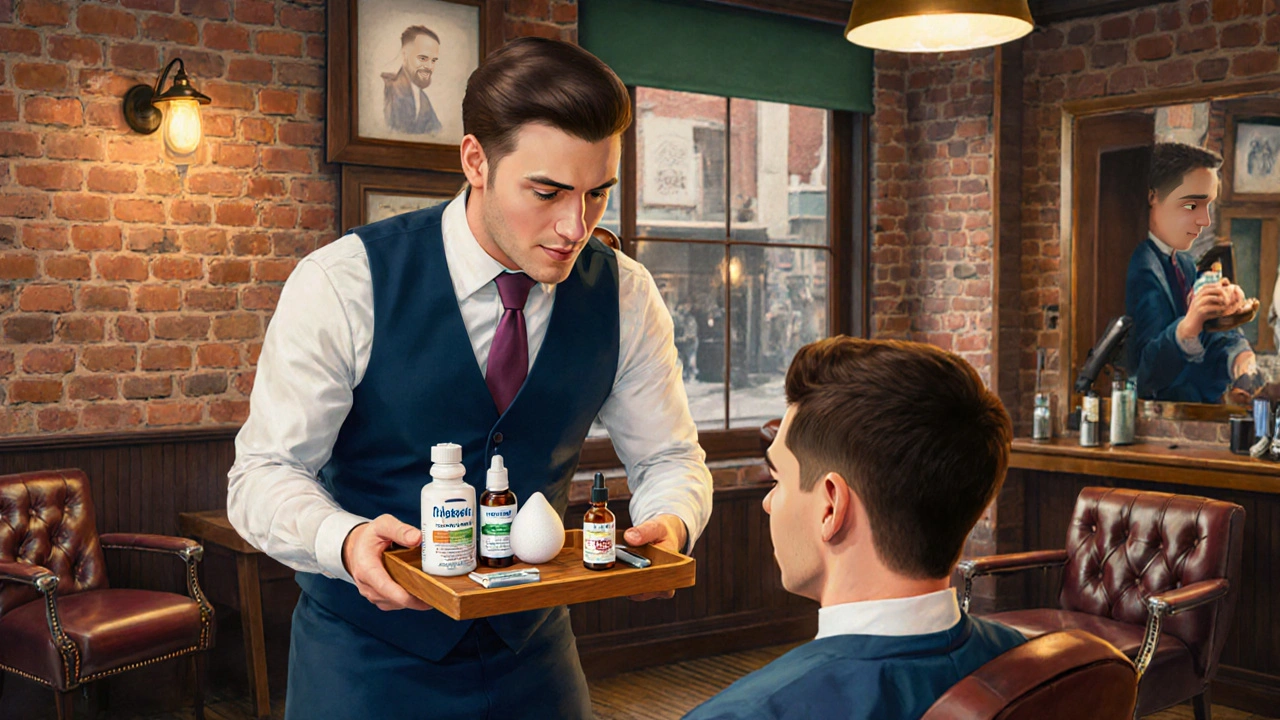
Side‑By‑Side Comparison
| Treatment | Mechanism | Typical Use | Avg. Regrowth %* | Common Side‑Effects | Cost (US$ per month) |
|---|---|---|---|---|---|
| Proscare (Finasteride) | 5‑α‑reductase inhibitor (typeII) | 1mg oral daily | 70‑80 | Sexual dysfunction, rare mood changes | 30‑45 (brand) / 10‑15 (generic) |
| Minoxidil | Vasodilator, prolongs anagen phase | 5% foam/solution twice daily | 30‑45 | Scalp irritation, unwanted facial hair | 15‑25 |
| Dutasteride | Dual 5‑α‑reductase inhibitor (typeI+II) | 0.5mg oral daily (off‑label) | 85‑90 | Higher sexual side‑effects, possible hormone changes | 25‑35 |
| LLLT | Photobiomodulation stimulates follicle metabolism | 10‑20min, 3‑5×week | 30‑45 | None reported | 40‑80 (device cost amortized) |
| Hair transplant | Surgical relocation of donor follicles | One‑time procedure | 90‑100 (permanent) | Scarring, infection risk | 4,000‑15,000 (one‑time) |
| Saw palmetto / Pumpkin seed oil | Natural DHT inhibition (weak) | 300‑500mg oral daily | 10‑15 | Minimal (rare GI upset) | 5‑20 |
| PRP | Growth‑factor‑rich plasma stimulates follicles | 3‑4 injections, 1month apart | 30‑45 | Mild pain, bruising | 500‑1,500 per session |
*Regrowth percentages are averages from peer‑reviewed studies conducted between 2018‑2024. Individual results vary.
Which Option Is Right for You?
- Early‑stage thinning (Norwood 1‑2): Finasteride or dutasteride offer the highest chance of halting loss. Pair with minoxidil for added density.
- Concerned about oral meds: Try minoxidil, LLLT, or natural extracts first; switch to finasteride only if progress stalls.
- Advanced baldness (Norwood 5+): Surgical transplant delivers permanent coverage; adjunct PRP can boost graft survival.
- Budget‑tight: Generic finasteride, minoxidil, or botanical supplements keep monthly spend under $30.
- Side‑effect sensitive: LLLT and hair transplant have negligible systemic risks; avoid oral 5‑α‑reductase inhibitors.
Practical Tips & Pitfalls to Avoid
- Give any oral or topical medication at least 6months before judging effectiveness-hair cycles are slow.
- Don’t combine dutasteride and finasteride; one is enough and combining raises side‑effects.
- Monitor PSA levels annually if you stay on finasteride past age 50; the drug can mask prostate‑cancer markers.
- Choose reputable LLLT devices; FDA‑cleared units have specific wavelength and power specifications.
- For PRP, select a clinic that follows a standardized centrifugation protocol (e.g., 1,500rpm for 10minutes).
Next Steps
Start with a quick self‑assessment: How much hair have you lost? Are you comfortable swallowing a pill every day? Do you mind a scalp‑applied solution? Once you answer these, pick the tier that fits your comfort level and budget, then stick with it for at least half a year.
If side‑effects appear, talk to a dermatologist right away. They can adjust the dose, switch to dutasteride, or add a complementary therapy like minoxidil.
Frequently Asked Questions
Can women use Proscare (Finasteride) for hair loss?
Finasteride is not approved for women, especially those who are pregnant or could become pregnant, because it can cause birth defects. Women usually turn to minoxidil or low‑level laser therapy.
How long does it take to see results with finasteride?
Most men notice a slowdown in shedding within 3months, and visible regrowth often appears after 6‑12months of consistent daily use.
Is it safe to combine finasteride with minoxidil?
Yes, the combination is common and generally safe. Finasteride tackles the hormonal cause, while minoxidil boosts follicle activity, giving better overall results.
What are the main reasons people stop using finasteride?
The primary reasons are sexual side‑effects, perceived lack of progress, or concerns about long‑term hormone impact. Switching to dutasteride or a non‑oral approach can address many of those worries.
How does the cost of a hair transplant compare over time to lifelong finasteride?
A $10,000 transplant is a one‑time expense that can last decades. Finasteride at $15 per month adds up to $180per year, so after 55years the total exceeds $10,000. The choice often hinges on how early you start treatment and personal preference for surgery versus daily medication.
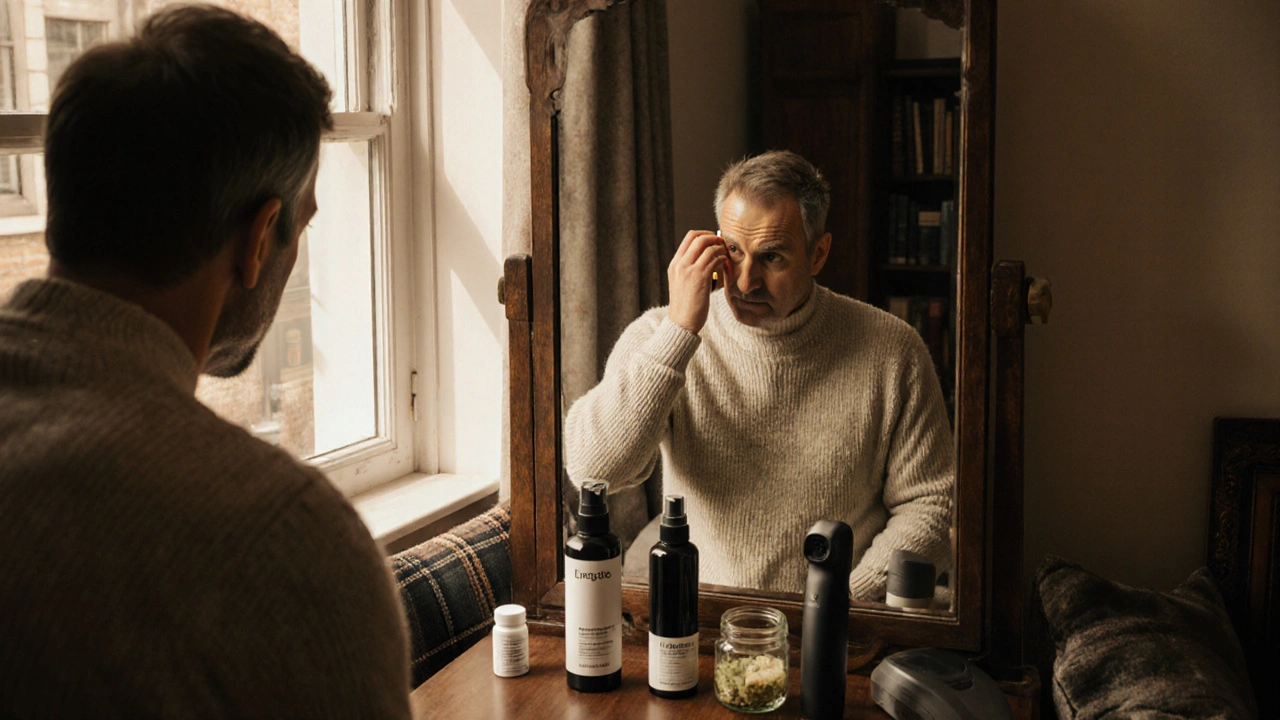
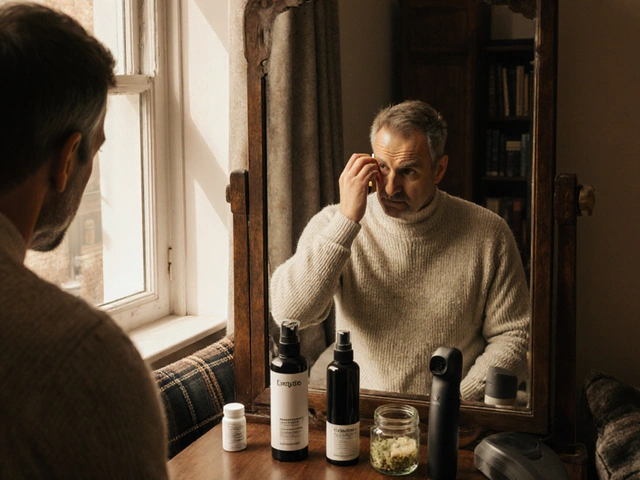


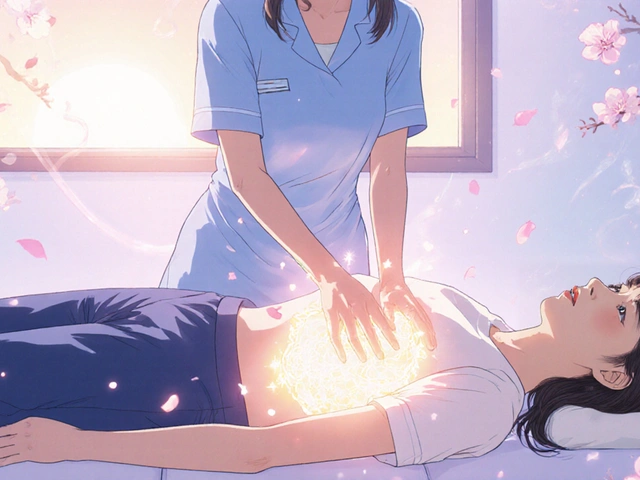
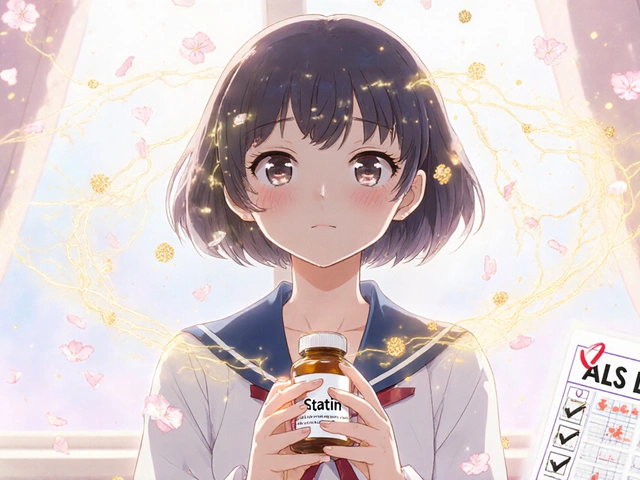


cris wasala September 28, 2025
Keep in mind finasteride has a solid track record for slowing hair loss and many folks see regrowth after a few months. If you’re on a budget the generic version is a great place to start.
Tyler Johnson October 9, 2025
I understand that choosing a treatment can feel overwhelming especially when the literature is dense but taking a step‑by‑step approach often clarifies priorities. Consider how you weigh efficacy against side‑effects and cost, then align that with your personal comfort level. For many men the oral 5‑alpha‑reductase inhibitors serve as a backbone while topical agents add a boost. It’s also wise to set a realistic timeline; hair cycles move slowly and six months of consistent use is usually the minimum to gauge true benefit. Communicating these expectations with your dermatologist can prevent frustration later on. Ultimately the decision is yours and should reflect both medical evidence and lifestyle practicality.
Annie Thompson October 21, 2025
Reading through the comparison left me feeling a mix of hope and dread. The numbers on finasteride efficacy are impressive yet the shadow of sexual side effects looms large. I have watched friends wrestle with that dilemma and some chose to stop early. The idea of a daily pill feels simple but the psychological weight of a hormone blocker is not trivial. On the other hand minoxidil seems harmless but the daily ritual can become a constant reminder of loss. I recall a cousin who gave up after weeks because the foam irritated his scalp. Dutasteride sounds powerful but the off‑label status makes me uneasy about long‑term safety. Laser devices promise a drug‑free route yet the cost can rival a transplant. Natural extracts appear gentle but the scientific backing feels thin. PRP injections are marketed as cutting‑edge but the repeated needle pricks can be intimidating. Hair transplant offers a permanent fix but the surgery anxiety is real. Balancing all these options feels like a maze with no clear exit. I wish there were a simple decision matrix that accounted for personal anxiety. Still I keep returning to the fact that a consistent regimen, whatever you pick, is key. Maybe the real winner is patience and realistic expectations.
Parth Gohil November 1, 2025
From a mechanistic perspective the inhibition of type‑II 5‑α‑reductase by finasteride reduces dihydrotestosterone flux, thereby attenuating follicular miniaturization. In contrast, minoxidil works via potassium channel activation and vasodilation, which prolongs the anagen phase. If you’re modeling cost‑efficacy curves, finasteride typically occupies the Pareto frontier for early‑stage androgenetic alopecia. However, for patients with contraindications to systemic hormones, low‑level laser therapy presents a non‑pharmacologic photobiomodulation modality with a favorable safety profile. Ultimately, it boils down to aligning the pharmacokinetic profile with the patient’s adherence horizon.
VAISHAKH Chandran November 13, 2025
Finasteride is the obvious choice for anyone who values results over half‑hearted alternatives.
Pat Merrill November 24, 2025
Oh great another “miracle” pill that costs less than a latte and magically brings hair back – because science is totally a free‑for‑all carnival.
Vicki Roth December 6, 2025
If cost is the main driver, the generic version barely hits your wallet.
Vishal Bhosale December 17, 2025
Honestly the data isn’t that groundbreaking just another marketing hype.